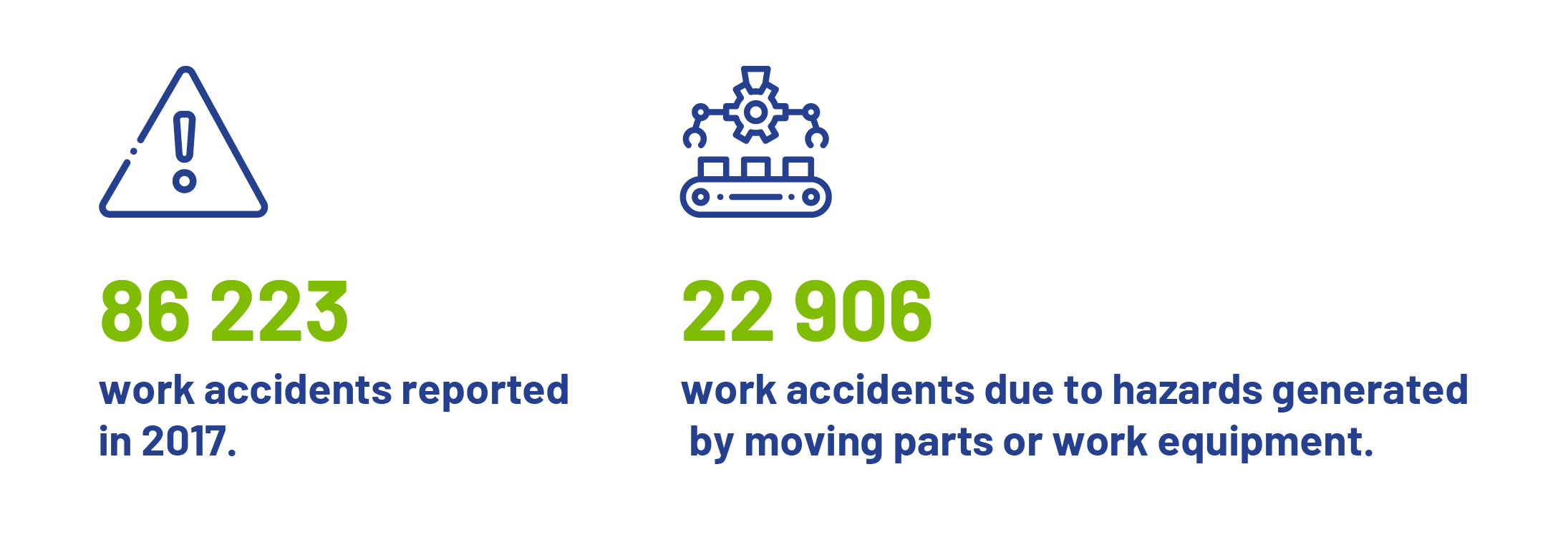How Often Work Accidents Occur?
Unfortunately, work accidents are part of everyday lives of workers, and workers are daily exposed to various hazards. Prevention plays a key role on how often work accidents occur. As the aim is to reduce the risks at the source, it is essential to prevent them by both adopting good practices and optimizing the work environments. According to the most recent CNESST report, one of the most important causes of work accidents were due to hazards generated by moving parts or work equipment. In 2017, 86,223 work accidents were reported, of which 22,906 were due to hazards generated by moving parts or work equipment.
 Industrial workers, including those working in factories and warehouses, are exposed to many risks including mechanical hazards. Machinery and production equipment are critical tools for a production company, and it is essential to consider their potential risks. In addition, there are many moving parts in the food industry. Food production and food processing plants are environments where risks for workers are everywhere.
Industrial workers, including those working in factories and warehouses, are exposed to many risks including mechanical hazards. Machinery and production equipment are critical tools for a production company, and it is essential to consider their potential risks. In addition, there are many moving parts in the food industry. Food production and food processing plants are environments where risks for workers are everywhere.
How Can We Reduce the Risks Associated With Machines?
The first step is to identify the potential danger zones on each machine and then restrict access to moving parts, including routers, saws, endless screws, gears, etc. In order to optimize work environment and reduce risks, it is essential to select the appropriate material in which the protective devices will be manufactured. The aim is to reduce access to moving parts without compromising the visibility of the machine.
Which Material to Choose for Guards and Protective Devices
To be suitable for the design of guards, a material must be very resistant and unobtrusive as it must not interfere with the visibility and use of the machine. In addition, the material must have good flexibility in order to be shaped to the specific characteristics of machines. Guards are often custom-designed based on the type of machine and its use. A material with good processability will allow the design of tailored-made and machine-appropriate protective devices.
To ensure that machine safety standards are met, a material stands out thanks to its characteristics that suit to the specific needs. Polycarbonate is a lightweight and highly resistant plastic with an excellent weight-to-power ratio. Polycarbonate offers many benefits over traditional materials to improve worker safety. This is why most of guards on machines in production and processing environments are made with polycarbonate. By comparison, polycarbonate is 253 times more resistant to impact than standard glass. This comparison applies to standard polycarbonate, as there is a wide range of highly resistant polycarbonates (including ballistic grade). Ballistic grade polycarbonate is used in environments that are exposed to high security risks such as government buildings.
A Specific Grade for the Food Industry

When guards come into contact with food or are specifically used to reduce the risk of contamination, there is an even more appropriate solution. Thus, the best option is the guards made with food grade polycarbonate instead than standard grade polycarbonate. Polycarbonate is available in a grade that meets FDA standards. Food grade polycarbonate provides all the advantages of the standard grade, but it is safe for food contact. This material is suitable for food production, processing and packaging plants.
Characteristics of Polycarbonate:
- Very good thermal resistance
- Impact and shock-resistant (253x stronger than glass)
- Suitable for wet environments
- Bendable
- High durability
- Excellent weight-to-power ratio
- Easy to clean








